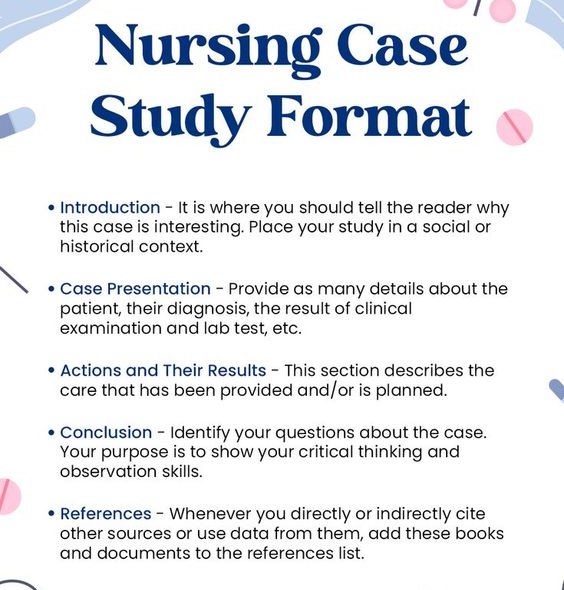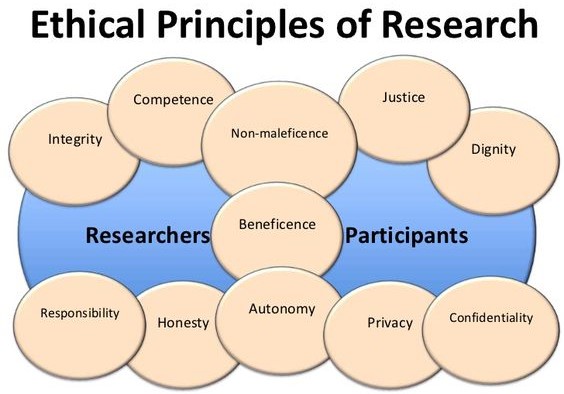The presentation of a nursing case study at a conference is a powerful platform to showcase your expertise, share valuable insights, and contribute to the advancement of nursing practice. It offers a unique opportunity to engage with fellow professionals, spark discussions, and inspire innovation. However, crafting a compelling and impactful nursing case study for a conference presentation requires careful planning, meticulous execution, and a strong understanding of the audience and their interests.
This article provides a comprehensive guide to help you navigate the process of writing a compelling nursing case study for a conference presentation and deliver a presentation that resonates with your audience.
Step-by-Step Guide to Writing a Nursing Case Study for a Conference Presentation
Identifying a Suitable Case Study for a Conference Presentation
The foundation of a successful nursing case study for a conference presentation lies in choosing the right case. It should be:
- Clinically significant: The case should highlight a unique or challenging clinical situation that offers valuable learning opportunities for other nurses.
- Relevant to your audience: Consider the target audience of the conference and select a case study that aligns with their specific interests and areas of practice.
- Ethical and confidential: Ensure that all patient information is anonymized and presented in a way that respects patient privacy and confidentiality.
- Well-documented: A strong case study requires thorough documentation of the patient's history, assessments, interventions, and outcomes.
Defining the Focus and Objectives
Once you've chosen a case, clearly define the specific focus and objectives of your nursing case study for a conference presentation. What key learning points do you want to convey? For instance, you might focus on:
- A specific nursing intervention: How a particular nursing intervention impacted patient outcomes.
- A unique clinical challenge: How a complex clinical situation was managed effectively.
- A new approach to care: A successful application of a new model or technology in patient care.
Structuring the Case Study
A well-structured nursing case study for a conference presentation should follow a logical narrative flow. Consider using the following framework:

- Introduction: Begin with a brief overview of the case, including the patient's presenting problem and relevant background information.
- Case Description: Provide a detailed account of the patient's history, physical and psychological assessments, and relevant diagnostic findings.
- Nursing Interventions: Describe the nursing interventions implemented, including specific actions taken, rationale for the interventions, and the patient's response to care.
- Outcomes: Present the patient's outcomes following the interventions, including any improvement in their condition, functional status, or quality of life.
- Discussion: Analyze the case, highlighting key learning points, implications for nursing practice, and potential areas for further research.
- Conclusion: Summarize the main points of the case study and reiterate its significance for the audience.
Gathering and Analyzing Data
Thorough data collection is crucial for creating a compelling nursing case study for a conference presentation. This includes:
- Patient records: Review medical records, nursing notes, and other relevant documentation for comprehensive information.
- Clinical assessments: Gather data from physical examinations, vital signs, laboratory results, and other assessments.
- Patient interviews: If appropriate, conduct interviews with the patient to gain their perspective on their experience and care.
- Literature review: Support your analysis and interpretations with evidence from relevant research articles and professional guidelines. Nursing Papers is one of the trusted sources of scholarly resources including nursing case studies, essays and research papers.
Writing the Case Study
Once you have gathered your data, you need to transform it into a clear and engaging narrative. When writing your nursing case study for a conference presentation, keep the following points in mind:
- Clarity and conciseness: Use plain language and avoid jargon.
- Objectivity and accuracy: Present the facts accurately and avoid subjective opinions or biases.
- Structure and organization: Follow a logical flow and use headings and subheadings to improve readability.
- Visual aids: Incorporate graphs, charts, tables, and images to enhance understanding and engage the audience.
Delivering the Presentation
The presentation itself is crucial in bringing your nursing case study for a conference presentation to life. Keep the following tips in mind:
- Practice, practice, practice: Rehearse your presentation several times to ensure smooth delivery and effective timing.
- Engage the audience: Use interactive techniques such as questions, polls, or case scenarios to keep the audience engaged.
- Visual aids: Utilize high-quality slides, videos, or other visual aids to enhance your message and maintain audience interest.
- Passion and enthusiasm: Your enthusiasm and passion for the case study will be contagious and will inspire your audience.
Ethical Considerations
It's essential to address ethical considerations when presenting a nursing case study for a conference presentation:
- Patient confidentiality: Ensure that all patient information is anonymized and presented in a way that protects their privacy.
- Informed consent: Obtain informed consent from the patient before presenting their case, unless it is de-identified.
- Data security: Protect the confidentiality of patient data by using secure storage and transmission methods.

Key Elements of a Strong Nursing Case Study for a Conference Presentation
- Clear and concise writing: Use plain language and avoid technical jargon.
- A strong narrative flow: Present the case in a logical and engaging manner.
- Detailed descriptions: Provide thorough descriptions of the patient's history, assessments, interventions, and outcomes.
- Evidence-based analysis: Support your conclusions with evidence from research and professional guidelines.
- Practical implications: Highlight the relevance of the case for nursing practice and identify potential areas for improvement.
- Engaging visuals: Utilize graphs, charts, images, or videos to enhance understanding and audience engagement.
- Clear objectives and takeaways: State your key learning points and what you want the audience to remember.
- Open discussion and interaction: Encourage questions and create opportunities for dialogue with the audience.
Examples of Effective Nursing Case Study Topics for Conferences
- Improving medication safety in older adults: A case study showcasing successful implementation of a medication reconciliation program.
- Managing complex chronic pain: A case study exploring innovative strategies for managing chronic pain in patients with multiple comorbidities.
- Promoting patient engagement in self-management: A case study highlighting successful use of technology and patient education to promote self-management of chronic conditions.
- Preventing falls in hospitalized patients: A case study evaluating the effectiveness of a fall prevention protocol.
- Improving end-of-life care for terminally ill patients: A case study demonstrating the benefits of a compassionate and holistic approach to end-of-life care.
Tips for Writing a Successful Nursing Case Study for a Conference Presentation
- Start early: Begin writing your case study well in advance of the conference deadline to allow time for research, data collection, and revisions.
- Focus on a specific topic: Choose a narrow focus for your case study to ensure depth and clarity.
- Use a consistent format: Follow a standardized structure for your case study to maintain clarity and consistency.
- Incorporate visual aids: Use graphs, charts, tables, and images to enhance understanding and engagement.
- Get feedback from colleagues: Seek feedback from other nurses or colleagues to improve the clarity and quality of your case study.
- Practice your presentation: Rehearse your presentation several times to ensure smooth delivery and effective timing.
Resources for Writing a Nursing Case Study
- The American Nurses Association (ANA): Offers resources and guidelines for nursing research and practice.
- The National League for Nursing (NLN): Provides resources and support for nursing education and professional development.
- The National Center for Nursing Research (NCNR): Offers information and funding opportunities for nursing research.
- Nursing journals: Review articles published in nursing journals for examples of well-written case studies.
The Importance of Sharing Nursing Case Studies
Presenting a nursing case study for a conference presentation is not just about showcasing your expertise; it's about contributing to the advancement of nursing practice. By sharing your experiences, you can:
- Educate your colleagues: Provide valuable learning opportunities for other nurses.
- Promote best practices: Share successful interventions and strategies for improving patient care.
- Advance nursing knowledge: Contribute to the body of nursing knowledge through case study research and analysis.
- Foster innovation and creativity: Inspire other nurses to think critically and develop new approaches to patient care.
Common Problems in Nursing Case Study Writing
Here are some common pitfalls to avoid when writing nursing case studies:
1. Lack of Focus and Clarity:
- Unclear Case Study Objective: The purpose of the case study should be defined upfront, whether it's to illustrate a specific nursing concept, analyze a patient's situation, or evaluate a particular intervention.
- Unfocused Narrative: The case study should be streamlined, focusing on relevant details that contribute to the learning objective. Avoid irrelevant tangents or excessive descriptive details that detract from the core message.
- Missing Analysis: The case study should go beyond simply presenting facts. It needs to analyze the situation, apply nursing knowledge, and draw conclusions.
2. Insufficient Information:
- Inadequate Background Information: The case study should provide sufficient context about the patient's history, physical and psychological status, and the relevant medical information.
- Lack of Nursing Assessment: The case study should include a detailed assessment of the patient's needs, including physical, emotional, and social aspects. This lays the groundwork for the subsequent nursing interventions.
- Incomplete Nursing Interventions: The interventions should be clearly described, including rationale, techniques used, and expected outcomes.
3. Poor Organization and Structure:
- Disorganized Structure: A clear structure helps readers understand the case study's flow and key points. Employ headings and subheadings to break down complex information.
- Lack of Logical Progression: The case study should follow a logical sequence, moving from background information to assessment, interventions, evaluation, and conclusion.
- Poor Writing Style: The writing should be concise, clear, and easy to understand, using professional language and appropriate terminology.
4. Lack of Critical Thinking and Evaluation:
- Superficial Analysis: The case study should go beyond simply describing events. It should analyze the patient's situation, consider the underlying causes, and evaluate the effectiveness of nursing interventions.
- Missing Ethical Considerations: Ethical dilemmas and considerations should be discussed, illustrating how nurses approach complex situations within a moral framework.
- Weak Recommendations: The case study should offer thoughtful recommendations for further action, based on the analysis and evaluation of the situation.
5. Formatting and Citation Errors:
- Poor Formatting: Follow proper formatting guidelines, including font type, spacing, margins, and headings. This helps maintain consistency and readability.
- Incorrect Citations: Use correct citations and referencing style (e.g., APA, MLA) to avoid plagiarism and ensure credibility.

Remember, a well-written nursing case study provides valuable insights for students and practitioners, enhancing their understanding of patient care and fostering critical thinking skills.
Crafting a compelling nursing case study for a conference presentation is a valuable endeavor that allows you to showcase your expertise, share valuable insights, and contribute to the advancement of nursing practice. By following the tips and strategies outlined in this article, you can develop a well-structured and engaging presentation that will resonate with your audience and leave a lasting impact. Remember, the power of a well-presented nursing case study for a conference presentation lies in its ability to inspire, educate, and ultimately, improve patient care.
Get Professional Nursing Case Study Writing Help
At Exemplary Dissertations, we provide professional nursing case study writing help for undergraduate, Degree, Master’s and Doctoral programs. Our service covers topic suggestion, case study writing, proof reading and editing, and plagiarism check and removal. Besides, we can also help you with writing high quality nursing research papers, essays, thesis and dissertations.